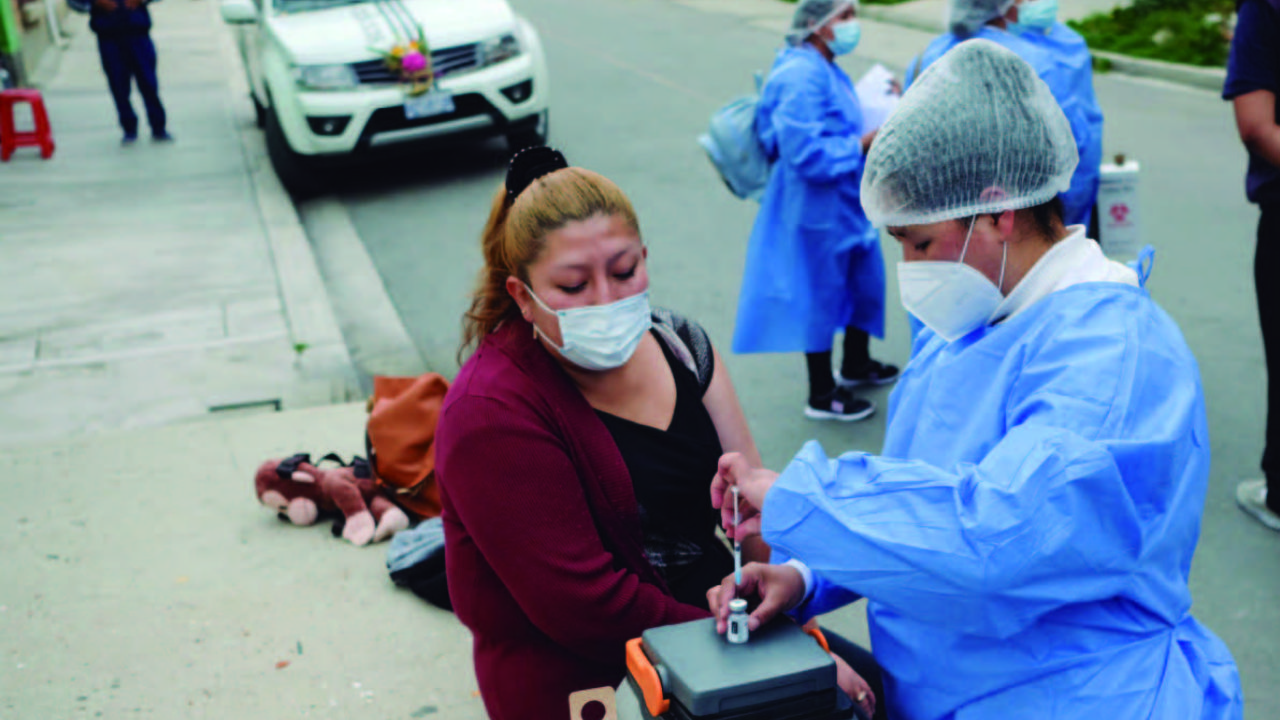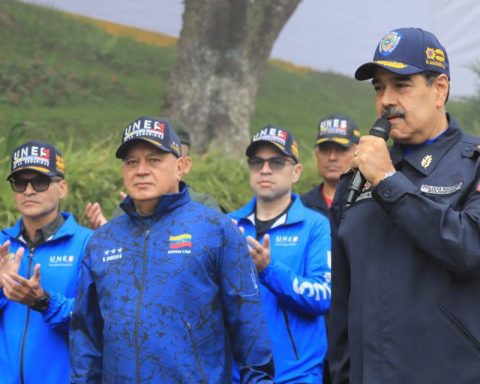Luis Escobar / La Paz
On March 10, 2020, the then Minister of Health, Aníbal Cruz, confirmed the presence of the first two cases of Covid-19 in Bolivia. They were two women who came from Europe. The disease was still unknown in the country that he found with a precarious health system.
This day marks two years since the arrival of the pandemic and the country is in full de-escalation of cases of a fourth wave and with 55.7% of the population vaccinated with the complete scheme, which generates optimism for the hope of an early exit from the pandemic.
“At that time, we did not know the enemy, it was invisible. The country did not have the conditions (to face the disease), it did not have a diagnostic service. We had to send the samples to the CDC in Atlanta (in the United States) and the results arrive after four days,” Aníbal Cruz, today Secretary of Health of the Mayor’s Office of Cercado in the department of Cochabamba, told Page Seven.
The former health authority said that at that time the country did not have the necessary infrastructure, equipment and human resources. “We were experiencing the dengue endemic with 160,000 people infected. In this way, Bolivia received the pandemic,” she explained.
Cruz recalled that they began to determine what measures could be taken in these unfortunate conditions: without an immediate diagnosis system and with deficiencies in hospitals. “We were the first in the region to close borders and airports. Classes and the Oruro Carnival were suspended. We determined that a lockdown was necessary.”
The first wave lasted five months, registered 20,000 infected and 4,000 deaths with a fatality rate of 6.2%, the highest of the entire pandemic.
When the cases began to decrease, the second wave arrived between July and September 2020, when there was a new increase in cases and the lack of intensive care units. Unlike the first wave, it had a faster climb and descent.
At the end of the second wave, people lost respect for the disease. The extreme biosecurity measures were suspended. This situation prevented the spread of infections. Between February, March and early April, the weekly contagion was 5,000 cases.
At the end of the fourth month, the number of infections began to grow. According to Cruz, it was the “most devastating” stage because the infected quadrupled and the dead doubled.
“We had the oxygen crisis, the lack of intensive care units and the deaths on the streets. Apparently it was the most devastating wave and there was a light at the end of the tunnel because we started the vaccination, ”he explained. In these waves, according to data from the Ministry of Health, the fatality rate dropped to 2.5%.
Photo: Page Seven
Vaccination made it possible to face the fourth wave in a better way and obtain a lower number of deaths that reached a lethality of 0.7%, the lowest in the last two years. But, the number of cases increased significantly due to the more contagious variants than the previous ones, such is the case of delta and omicron.
In the fourth wave, herd immunity was introduced, but it was not enough for Bolivia and it was not possible to achieve the necessary number to reduce complicated patients. According to data from the Ministry of Health, to date 6.6 million people, including minors, have received the full vaccination schedule in the country. This figure represents 55.7% of the 11.8 million inhabitants.
It is necessary to specify that 8.8 million received the first component and the single dose, which is equivalent to 70.8% of the entire population. Only one million received the third dose, which represents 9%. This new stage was marked by misinformation that was encouraged by anti-vaccine groups.
The aerologist and director of the Children’s Hospital, Alfredo Mendoza, said that one of the problems is the poor performance in immunization. “We are one of the few countries in Latin America that has low levels of vaccination. We barely reached 50% and we did not see adequate strategies to combat misinformation from anti-vaccine groups, ”he maintained.
In the two years of the pandemic, Mendoza said that Bolivia has the “weakest” health system in the region. He hopes that the Government promotes vaccination campaigns showing the safety and effectiveness of the doses.
Doctors await the end of the pandemic
Doctors hope that with the current de-escalation of cases, the covid pandemic – which affected thousands of people – will become endemic, a disease with which humanity will learn to live.
“The natural history of the disease (explains) that as long as there is no new variant, the cases will decrease. We are practically experiencing a de-escalation that will arrive below the safety margin. Therefore, we must wait for the pandemic to become endemic,” said Cercado’s health secretary and former health minister, Aníbal Cruz.
The professional assured that a next wave with higher immunity should be expected. “The next increase in cases will be different because it will be accompanied by the winter stage. I hope that influenza and seasonal flu await us immunized and vaccinated, ”he said.
On the other hand, the epidemiologist Wilfredo Camargo considered that better times are predicted. “I think that due to Carnival, when people did not respect any biosafety measures, at the end of this month and the beginning of April, a regrowth could be registered. It will affect people who have not been vaccinated or have only had one dose,” he stated.
Endemicity is defined as the constant appearance of a disease in an area or population group, such as malaria, Chagas disease, dengue, yellow fever or others.

















